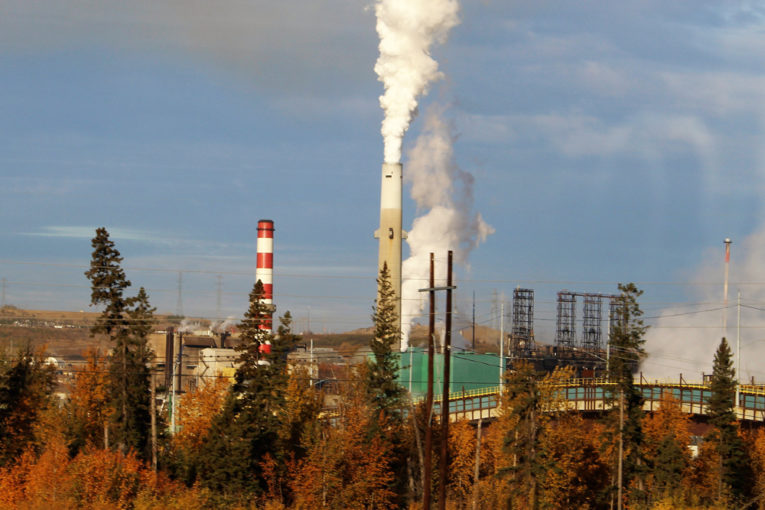
CALGARY – Less than two weeks after Teck Resources Ltd. pulled its application for the $20.6-bilion Frontier oilsands project, Suncor Energy Inc. filed an application to extend the life of its main oilsands mine.
Suncor, Canada’s largest oil company by market capitalization, said it expects to spend the next six years before regulators on its Base Mine Extension project, which it doesn’t expect to begin operating until 2030. That’s a timeline that analysts say is exceptionally long for a replacement project and creates new uncertainty for major projects in Canada.
Suncor’s current mine operations are 15 years away from the end of its operating life and the company is looking for approvals to replace its existing production by mining the ore in a nearby lease.
“We feel that filing in 2020 is prudent under the current regulatory process, including the effects of the new Impact Assessment Act to ensure adequate time is provided for the regulatory process,” Suncor CEO Mark Little said on a Feb. 6 earnings call about the project.
The Impact Assessment Agency of Canada released Suncor’s project description late Monday, which shows that Suncor expects to spend between 2019 and 2026 in the regulatory process.
In its application, the company said it expects to use “new technologies” in the mine extension that “have the potential to significantly reduce the overall footprint, reclamation timeline and GHG emissions” of the project. In addition, the company pledged to continue “aggressively pursuing paths to reduce emissions in other areas of its business and in ways that sequester carbon and produce net benefits.”
The company expects to begin constructing the mine in 2026, operating the mine in 2030 and decommissioning the facility 25 years later, in 2055. Once built, the replacement would produce 225,000 barrels of oil per day.
Suncor produced an average of 670,000 barrels of oil per day from the oilsands last year, including from its base mine operations, its steam-based oilsands facilities and its interests in the Fort Hills and Syncrude projects.
Analysts said the extended timelines associated with the review of the project will make it more difficult for other companies to propose new projects.
“What you go into the review process with and what you come out of it with could be fundamentally different projects,” said Kevin Birn, vice-president, North American crude oil markets at IHS Markit.
He said that in the time Suncor expects to be in the regulatory process in Canada for the extension, “you could have an event that’s as transformative as the rise of U.S. tight oil to the industry.”
In the past 10 years, a surge of horizontal drilling and fracking in the Permian Basin in West Texas and the Bakken in North Dakota has transformed the U.S. into the world’s largest oil producer and has turned oil markets on their head.
“In a 10-year envelope, we’ve gone from a world where we thought there was a scarcity (of oil) to one where there’s a surplus,” Birn said.
He also noted Vancouver-based Teck spent $1.1 billion moving its $20.6-billion Frontier project through the regulatory review process in Canada before shelving the planned mine days before the federal government was due to make a decision.
“These things do cost money and act as barriers to entry,” Birn said.
The new process is an improvement on the Canadian Environmental Assessment Act of 2012 that discouraged investment, said Moira Kelly, press secretary to the federal Environment and Climate Change Minister Jonathan Wilkinson.
“That is why our government introduced a new process. The rules we have put in place for the review of major projects will cut timelines, meet our constitutional obligations to Indigenous peoples, increase transparency and protect the environment,” Kelly said in an email.
Suncor’s decision to apply for approvals to extend the mine 10 years ahead of time “seems like a pretty prudent decision,” said ARC Energy Research Institute senior director Jackie Forrest.
“That’s probably a smart move to make as there is significant uncertainty (about the regulatory process in Canada),” Forrest said, noting that Bill C-69 introduced additional criteria for reviewing major projects.
The regulatory review process for the Frontier and Fort Hills oilsands projects both lasted 10 years, but changes of ownership and changes between provincial and federal regulators extended those timelines, Forrest noted.
She also said that Frontier and Fort Hills were greenfield projects, or brand new mines in new areas, whereas Suncor’s current application is looking to replace its current mine.
The new regulatory process includes an early assessment phase, wherein affected communities or Indigenous groups can raise major issues associated with a project, such as climate change, at the beginning of the regulatory process rather than at the end.
As a result, the new process should give Suncor “the ability to bring up the show-stoppers early,” said Marla Orenstein, director of the natural resources centre at Calgary-based Canada West Foundation.
“Maybe there’s some strategy there seeing that we need to get these issues out,” Orenstein said.
Other oilsands mining companies such as Canadian Natural Resources Ltd. and Imperial Oil Ltd. have significantly more time before their current mines reach the end of their producing life, Stifel FirstEnergy analyst Michael Dunn said in a January research note.
However, he noted, “Suncor is in the most disadvantageous position” with 15 years of mining life ahead of its Base Mine, followed by Syncrude Canada Ltd. with roughly 20 years ahead of its mines.
Dunn also noted that Suncor and Syncrude appear to be “eyeing a deal here in the near term” on a lease swap in the oilsands that would potentially allow Suncor to extend the life of its mine without developing the mine extension it applied for this week.
“We expect the next decade to see multiple deals that land undeveloped mineable leases in the hands of the most cost-advantaged owner,” Dunn said.
Financial Post
• Email: [email protected] | Twitter: geoffreymorgan
You can read more of the news on source
